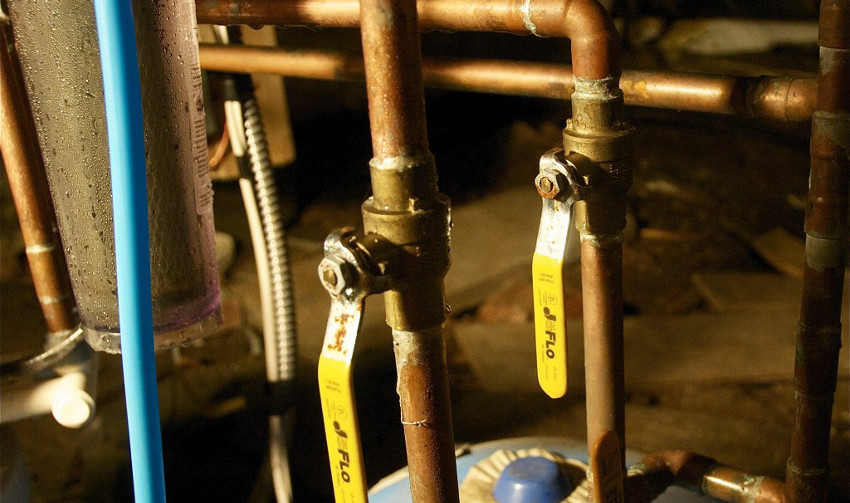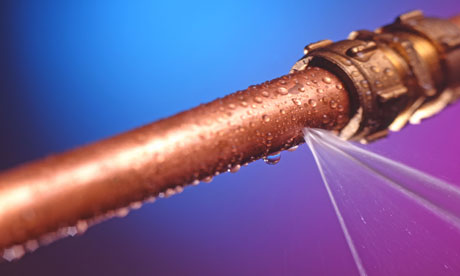Everyone has got their own unique way of thinking in relation to Diagnose Unwanted Plumbing Noises.

To identify noisy plumbing, it is necessary to identify initial whether the unwanted noises take place on the system's inlet side-in other words, when water is turned on-or on the drainpipe side. Sounds on the inlet side have varied reasons: too much water stress, worn shutoff and also faucet parts, incorrectly connected pumps or other devices, inaccurately put pipe bolts, as well as plumbing runs consisting of a lot of tight bends or various other constraints. Noises on the drain side generally come from poor area or, just like some inlet side noise, a format including limited bends.
Hissing
Hissing noise that takes place when a faucet is opened a little typically signals too much water pressure. Consult your neighborhood water company if you believe this problem; it will certainly have the ability to tell you the water stress in your location as well as can mount a pressurereducing shutoff on the incoming water system pipe if necessary.
Thudding
Thudding sound, commonly accompanied by trembling pipelines, when a faucet or appliance shutoff is turned off is a problem called water hammer. The noise as well as vibration are brought on by the reverberating wave of pressure in the water, which suddenly has no area to go. Often opening up a shutoff that discharges water quickly into a section of piping having a constraint, joint, or tee installation can create the same problem.
Water hammer can generally be treated by installing installations called air chambers or shock absorbers in the plumbing to which the trouble valves or taps are linked. These devices permit the shock wave produced by the halted circulation of water to dissipate in the air they contain, which (unlike water) is compressible.
Older plumbing systems might have short vertical areas of capped pipe behind wall surfaces on faucet runs for the exact same purpose; these can eventually loaded with water, minimizing or ruining their effectiveness. The remedy is to drain the water supply entirely by turning off the main water supply shutoff as well as opening all taps. After that open the major supply valve and shut the faucets individually, beginning with the faucet nearest the valve and also finishing with the one farthest away.
Babbling or Shrieking
Intense chattering or shrilling that occurs when a shutoff or faucet is activated, which typically goes away when the fitting is opened totally, signals loose or faulty interior components. The option is to change the shutoff or tap with a new one.
Pumps and also appliances such as washing makers as well as dish washers can move electric motor sound to pipelines if they are improperly attached. Link such things to plumbing with plastic or rubber hoses-never stiff pipe-to isolate them.
Other Inlet Side Noises
Creaking, squeaking, scraping, breaking, and also touching normally are triggered by the growth or contraction of pipes, typically copper ones providing warm water. The audios take place as the pipes slide against loosened bolts or strike nearby residence framework. You can commonly identify the location of the issue if the pipelines are subjected; just adhere to the audio when the pipes are making noise. Most likely you will find a loose pipeline wall mount or a location where pipes exist so near floor joists or other mounting pieces that they clatter against them. Affixing foam pipe insulation around the pipelines at the point of call ought to remedy the issue. Be sure bands and hangers are secure as well as give sufficient assistance. Where possible, pipeline bolts ought to be affixed to huge architectural elements such as foundation wall surfaces as opposed to to framing; doing so reduces the transmission of resonances from plumbing to surface areas that can amplify and transfer them. If connecting bolts to framework is inescapable, wrap pipes with insulation or other resilient material where they call bolts, as well as sandwich completions of brand-new bolts in between rubber washers when installing them.
Fixing plumbing runs that struggle with flow-restricting limited or countless bends is a last resource that needs to be undertaken just after getting in touch with a proficient plumbing specialist. However, this situation is relatively typical in older homes that may not have been built with interior plumbing or that have actually seen a number of remodels, especially by beginners.
Drain Noise
On the drainpipe side of plumbing, the chief objectives are to get rid of surfaces that can be struck by dropping or rushing water and also to protect pipelines to consist of unavoidable noises.
In new building and construction, bathtubs, shower stalls, commodes, and wallmounted sinks as well as containers ought to be set on or versus resistant underlayments to decrease the transmission of audio through them. Water-saving toilets and also taps are less noisy than traditional designs; mount them instead of older types even if codes in your area still permit utilizing older components.
Drains that do not run up and down to the cellar or that branch right into horizontal pipe runs supported at floor joists or various other framing existing especially bothersome sound troubles. Such pipelines are huge sufficient to emit significant resonance; they also bring considerable amounts of water, which makes the scenario even worse. In new construction, define cast-iron dirt pipes (the large pipelines that drain toilets) if you can manage them. Their massiveness contains a lot of the noise made by water travelling through them. Likewise, avoid transmitting drainpipes in wall surfaces shown to bedrooms and rooms where people gather. Walls consisting of drains must be soundproofed as was defined previously, utilizing dual panels of sound-insulating fiber board as well as wallboard. Pipes themselves can be wrapped with unique fiberglass insulation made for the function; such pipelines have an impervious plastic skin (often having lead). Results are not constantly satisfactory.
If Your Plumbing is Making These Sounds, There’s a Problem
A Bang or Thump When You Turn Off a Faucet
If a loud bang or thump greets you each time your turn off running water, you likely have a water hammer. A water hammer occurs when the water velocity is brought to a halt, sending a shock wave through the pipe. It can be pretty jarring — even worse, damaging to your plumbing system. All that thudding could loosen connections.
Strange Toilet Noises
You’re so familiar with the sounds your toilet makes that your ears will be attuned to anything out of the ordinary. Fortunately, most unusual toilet noises can be narrowed down to just one of several problems.
Foghorn sound:
- Open the toilet tank
- Flush the toilet
- When you hear the foghorn noise, lift the float to the top of the tank
If you’re ambitious, you can remove the ballcock valve and disassemble it to replace the washer. Or you can more easily replace the ballcock valve entirely. This device is relatively inexpensive and available at most any hardware store.
Persistent hissing:
The hissing following a flush is the sound of the tank filling. It should stop once the tank is full. But if the hissing continues, it’s likely because water is leaking out of the tank. The rubber flap at the bottom of the tank can degrade, letting water slip through and into the bowl. That’s why the tank is refilling continuously. Fortunately, this is an easy fix:
- Cut the water to the toilet by closing the shutoff valve on the water supply line.
- Flush the toilet to drain the tank.
- Disconnect the flapper
- Attach the new flapper
Gurgling or bubbling:
Gurgling or bubbling suggests negative air pressure in the drain line, likely resulting from a clog. As air releases, it causes the water in the toilet to bubble. This could either be a minor issue or a major one, depending on the clog’s severity. Clogs can be caused by toilet paper or more stubborn obstructions such as tree roots. If you can’t work out the clog with a plunger, contact a professional plumber for assistance because a clog of this magnitude could lead to filthy and unsanitary sewage backups in your sink bathtub.

We had been brought to that editorial about Why is My Home Making Strange Plumbing Noises from a good friend on our other blog. Sharing is caring. Helping people is fun. Thanks so much for your time invested reading it.
Top-notch fix? Dial!
Comments on “Managing Home Plumbing Noises Effectively”